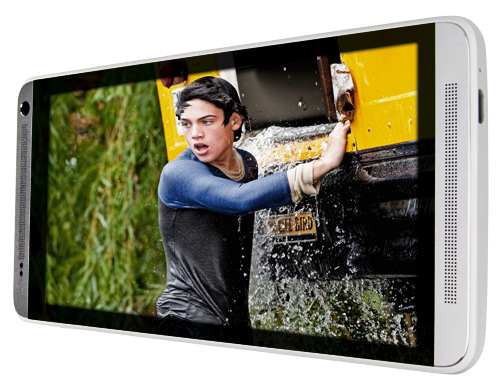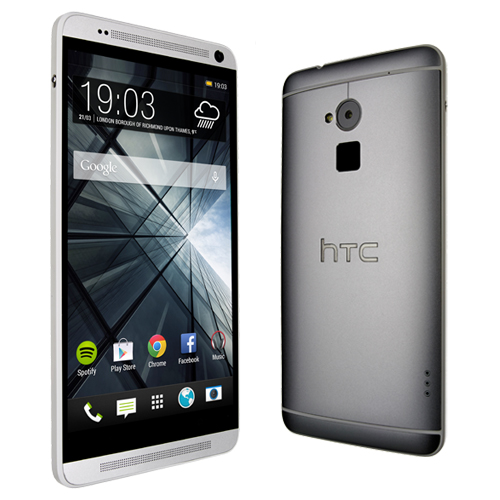What Hi-Fi? Verdict
The One Max is a fine performer but it could make better use of its bigger screen
Pros
- +
Sharp screen
- +
Great stereo speakers
- +
Gorgeous UI
- +
Expandable storage
- +
camera
Cons
- -
Less premium design
- -
Doesn’t bring the benefits that some do to that large screen
Why you can trust What Hi-Fi?
Looking rather like an HTC One on steroids, the One Max boasts a 5.9in screen in place of the One’s 4.7in version.
Look closely though, and differences start to appear. The back panel of the One Max is removable, doing away with the unibody metal design of the original One and with it, a large part of what made it feel like such a premium device.
Design
In return, you get access to a microSD card slot for upping the 16GB or 32GB on-board storage by another 64GB.
Also at the back is a small black square – a fingerprint scanner. You are able to record up to three different fingerprints, which can be assigned to different apps for launching direct from the lock screen.
Under the hood the HTC One Max is looking a little long in the tooth, with the previous generation 1.7GHz Snapdragon 600 processor running the show.
Spec junkies will no doubt be put off by that, but in day-to-day usage we don’t find the One Max lags compared with rivals.
HTC’s Sense UI has to be our favourite Android skin thanks to its clean, unfussy and intuitive approach and version 5.5, the latest iteration at the time of writing, is included out of the box.
If we had one complaint, it would be that the One Max doesn’t really make the most of the extra screen space it has, feeling like a blown up version of the One.
Performance

The HTC One Max is the first phone from the brand since 2011 to launch without Beats Audio built it.
We can’t say we’re sad to see it go. The Max’s musical performance is punchy, detailed and well controlled without being bogged down by the bassy bias that Beats Audio mode has a tendency to promote.
The Boomsound internal stereo speakers from the HTC One feature here too, and still produce the best sound from the internal speakers on any phone we’ve heard, with stacks more clarity, space and tonal balance to music.
Watching video on the 5.9in Full HD screen is enjoyable too. It doesn’t quite pip the Samsung Galaxy Note 3 for the deepest black levels and finest details, but we love the way the HTC deals with colour in a rich and vibrant, but believable way.
It holds up in our battery test too, dropping a respectable 12 per cent during a two-hour movie at 50 per cent brightness, and is capable of at least a day’s general usage before charging.
As for the camera, we’re looking at another Ultrapixel camera from HTC, which claims to use a smaller number of larger pixels for better low-light performance.
Its success on the HTC One was a mixed bag; it’s a similar story here.
Its reproduction of colour is largely accurate, though it does have some issues with overexposure in brighter light, blowing out some of the detail in well-lit objects.
Low-light performance is strong, producing well-judged shots.
Verdict
Overall, the HTC One Max doesn’t quite sweep us off our feet in the same way its smaller sibling did.
It offers good performance in most areas, but it fails to challenge the best, and that drop in build quality is a disappointment.
While it’s a solid effort across the board, we think there are better devices out there that make better use of the larger form factor.
MORE: Best smartphones to buy in 2014
MORE: Android smartphone and tablet reviews
What Hi-Fi?, founded in 1976, is the world's leading independent guide to buying and owning hi-fi and home entertainment products. Our comprehensive tests help you buy the very best for your money, with our advice sections giving you step-by-step information on how to get even more from your music and movies. Everything is tested by our dedicated team of in-house reviewers in our custom-built test rooms in London, Reading and Bath. Our coveted five-star rating and Awards are recognised all over the world as the ultimate seal of approval, so you can buy with absolute confidence.


